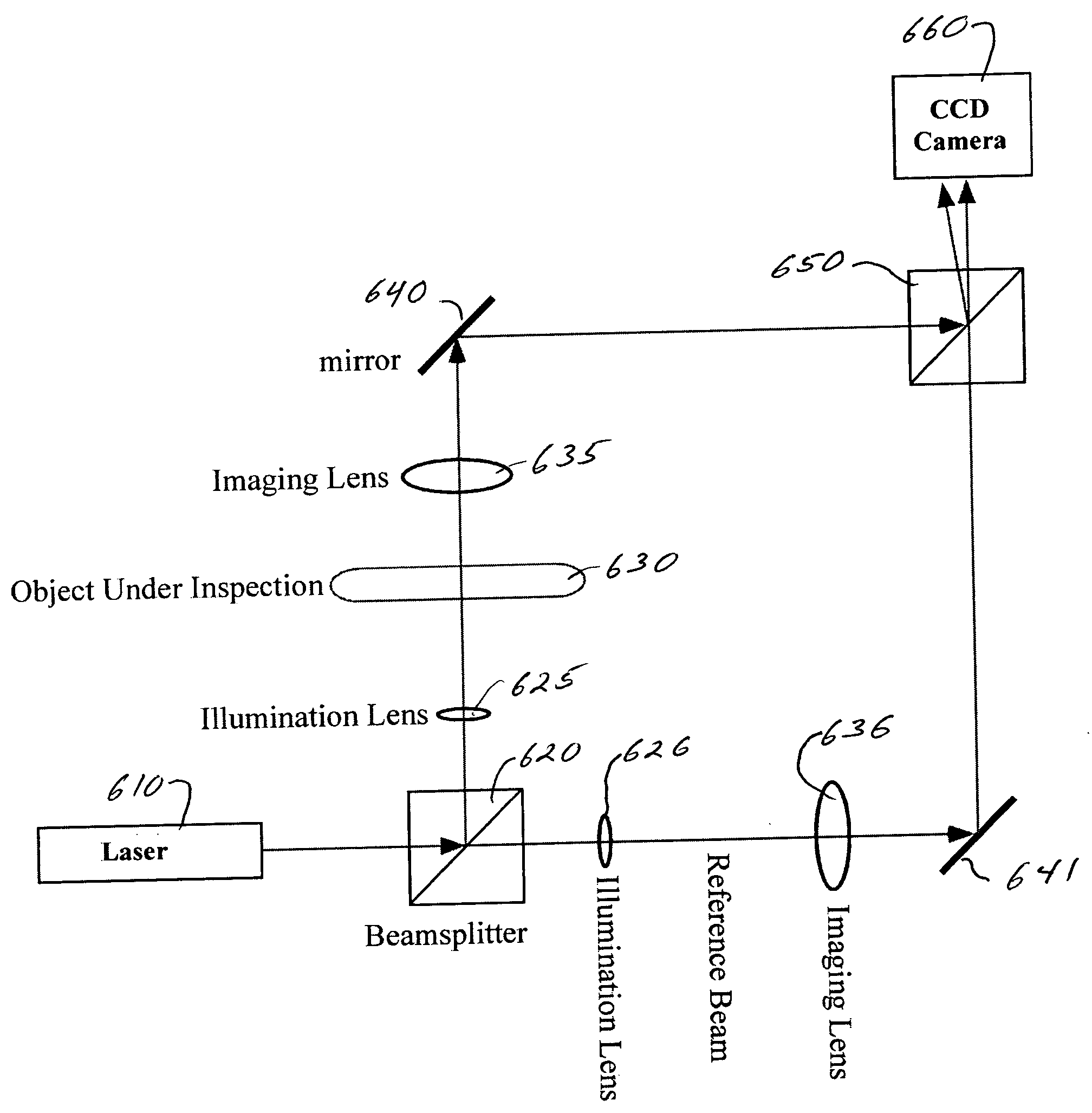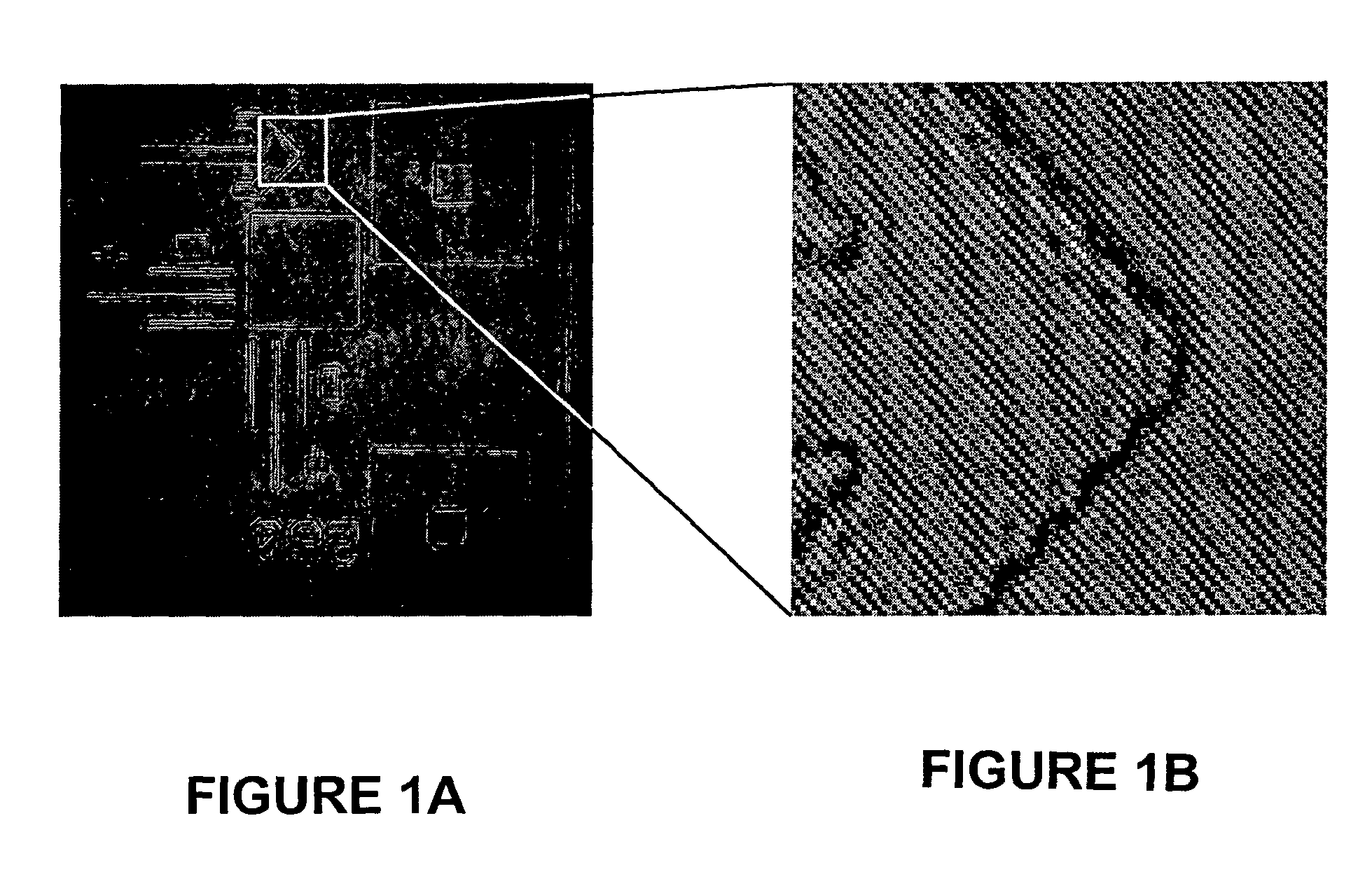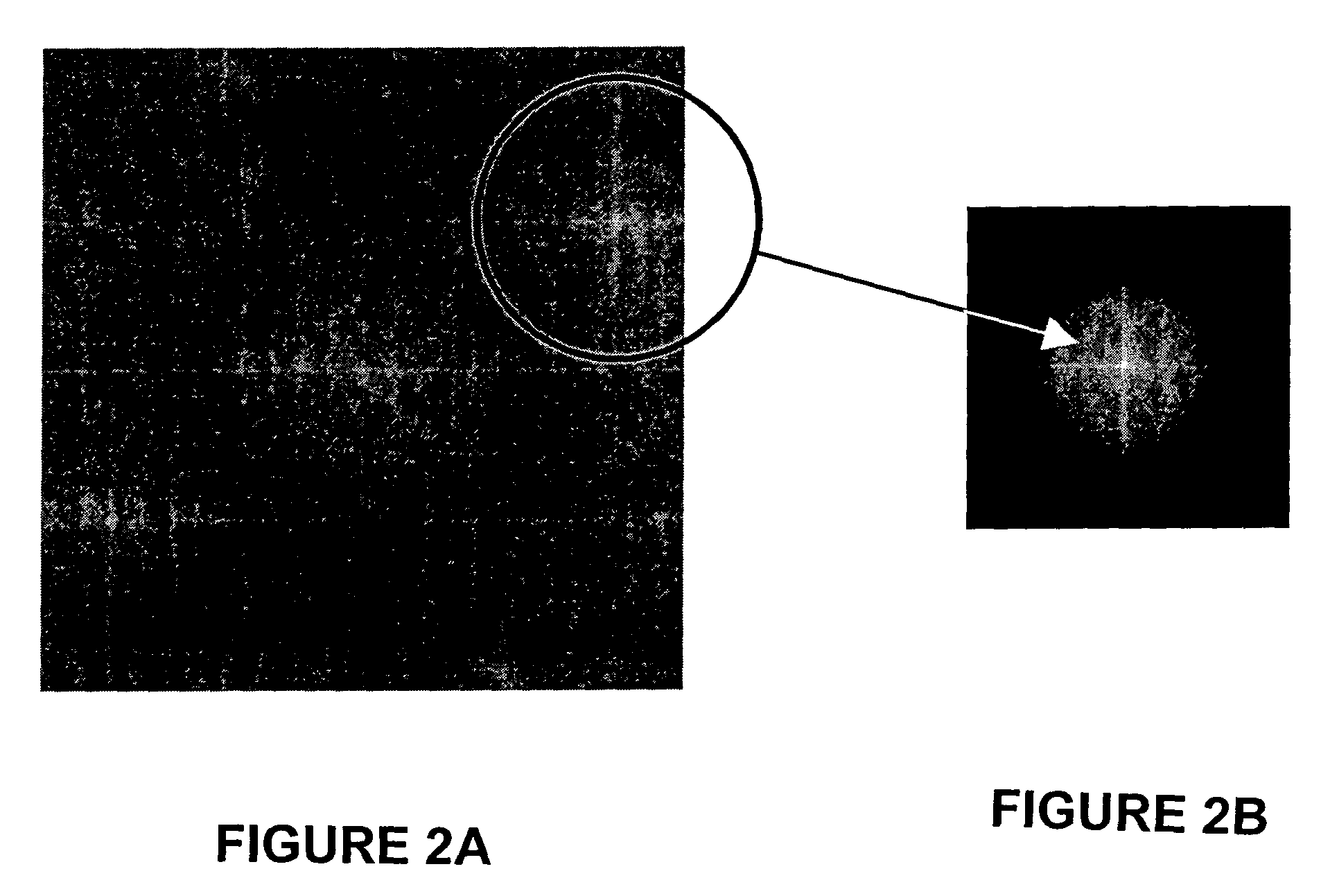Spatial-heterodyne interferometry for reflection and transmission (SHIRT) measurements
a technology of spatial heterodyne and interferometry, which is applied in the field of spatial heterodyne interferometry for reflection and transmission measurements, and can solve the problems of long scans, no complex wavefront information, and no information regarding the interior of an object of interest provided by ddh
- Summary
- Abstract
- Description
- Claims
- Application Information
AI Technical Summary
Benefits of technology
Problems solved by technology
Method used
Image
Examples
examples
Specific embodiments of the invention will now be further described by the following, nonlimiting examples which will serve to illustrate in some detail various features. The following examples are included to facilitate an understanding of ways in which the invention may be practiced. It should be appreciated that the examples which follow represent embodiments discovered to function well in the practice of the invention, and thus can be considered to constitute preferred modes for the practice of the invention. However, it should be appreciated that many changes can be made in the exemplary embodiments which are disclosed while still obtaining like or similar result without departing from the spirit and scope of the invention. Accordingly, the examples should not be construed as limiting the scope of the invention.
Example Set 1
The invention can include a method for measuring (in a single high-speed digital image capture) the complex wavefront of an electromagnetic wave after it...
PUM
| Property | Measurement | Unit |
|---|---|---|
| spatial-heterodyne carrier frequency | aaaaa | aaaaa |
| angle | aaaaa | aaaaa |
| thickness | aaaaa | aaaaa |
Abstract
Description
Claims
Application Information
 Login to View More
Login to View More - R&D
- Intellectual Property
- Life Sciences
- Materials
- Tech Scout
- Unparalleled Data Quality
- Higher Quality Content
- 60% Fewer Hallucinations
Browse by: Latest US Patents, China's latest patents, Technical Efficacy Thesaurus, Application Domain, Technology Topic, Popular Technical Reports.
© 2025 PatSnap. All rights reserved.Legal|Privacy policy|Modern Slavery Act Transparency Statement|Sitemap|About US| Contact US: help@patsnap.com



